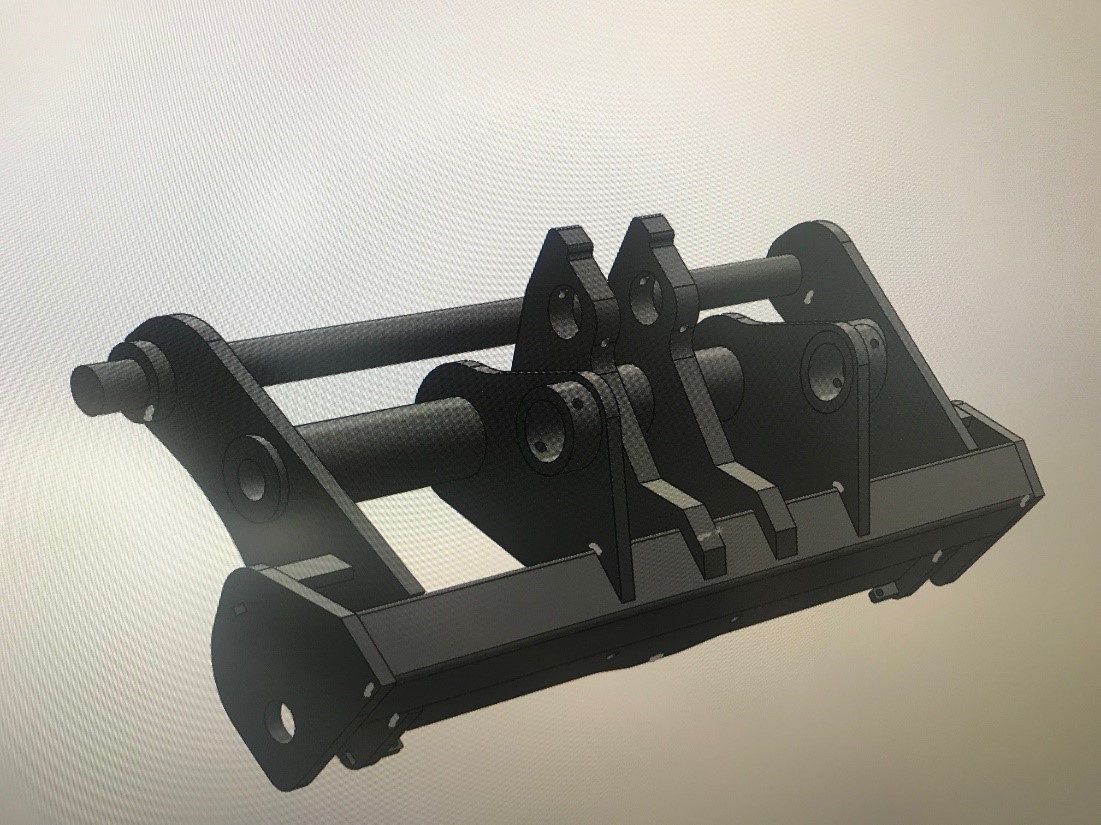Taylor Attachments Modernizes With a 3D Design Workflow
Farm equipment manufacturer trades time-consuming manual processes for a streamlined workflow that incorporates 3D scanning and CAD modeling.

Taylor Attachments was able to slash weeks off reverse engineering farm equipment with the Artec Eva scanner. Image Courtesy of Artec
Latest News
October 2, 2019
When your business is manufacturing attachment equipment for the machinery muscle of farming—think backhoes, tillers, bale stabbers, and forks—it’s no surprise that your design and build process would be heavily seeped in painstaking and time-consuming manual processes.
Taylor Attachments, a UK company that custom designs and builds tractor headstock conversion brackets, for years operated with a 100% manual process. The Taylor crew would devote countless hours to creating hand drawings for each tractor headstock project, taking days, if not weeks, to painstakingly measure, cross reference, and double check before creating mock-up prototypes that would eventually go on to be tested and distributed.
As Taylor’s business grew, so did the variety of tractor headstock conversion brackets it needed to build and design with the manual process. “The requirement to manufacture more of these products from varying sources meant that we were going to tie up far too many man hours along with encountering possible inaccuracies to make it viable,” explains Mark Taylor, the company’s president.
The firm had already made the transition to 3D CAD software, using SolidWorks from Dassault Systemes. Taylor made the call to extend its 3D workflow by adding 3D scanner technology from Artec3D to accelerate its design cycles and increase the accuracy of its projects. Europac 3D, which specializes in helping companies integrate 3D modeling and design tools, introduced Taylor Attachments to the Artec Eva, a structured light 3D scanner used to make quick and accurate 3D models of objects, from people to industrial equipment.
By creating an integrated workflow using Artec Eva and SolidWorks, Taylor Attachments completely overhauled its manual processes. Historically, the firm’s specialists would spend anywhere from seven to 12 hours making drawings using rulers and calipers, pens, and pencils to manually trace out parts and components on cardboard and paper. From there, the team would take more time to cross-reference and double check their work, taking up to two to three weeks for each part before moving to prototype.

There were other bottlenecks syncing the manual measuring process to the 3D CAD work, including difficulties building relationships with other profiles on the same part, especially if there were no common features to link to. “This is easily overcome when scanning,” Taylor says, adding there is now more precision compared to hand estimating. “I have tried to catch the scanner out many times, but never yet has it been more than 0.5mm out from the object—a tolerance we are more than happy with.”
Since transitioning to the 3D workflow, the Taylor Attachments team now takes around 20 minutes to scan an entire headstock and another 20 minutes to post process the job using the Artec Studio software. The company is also leveraging the Extract3D add-in for SolidWorks to bridge the scanned model with the CAD tool.
With the new workflow, Taylor Attachments is able to increase its output and take on more jobs. “Everything from start to finish is done is less than 24 hours,” Taylor says. “Compare that with the seven days to two to three weeks it took us when doing it the old way. There’s simply no going back for us.”
Watch this video for some how-to advice on how to scan objects with the Artec Eva.
More Artec 3D Coverage
Subscribe to our FREE magazine, FREE email newsletters or both!
Latest News
About the Author
Beth Stackpole is a contributing editor to Digital Engineering. Send e-mail about this article to [email protected].
Follow DE





